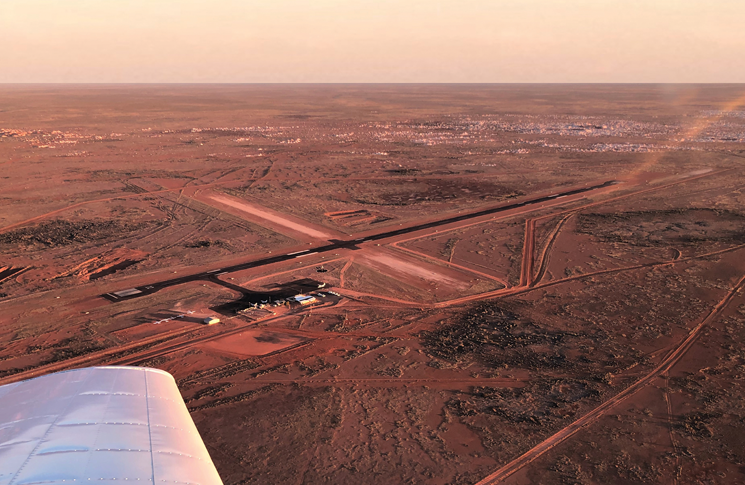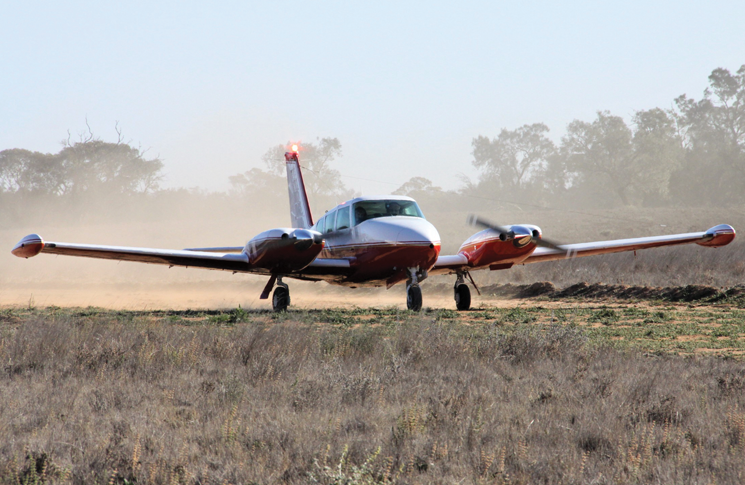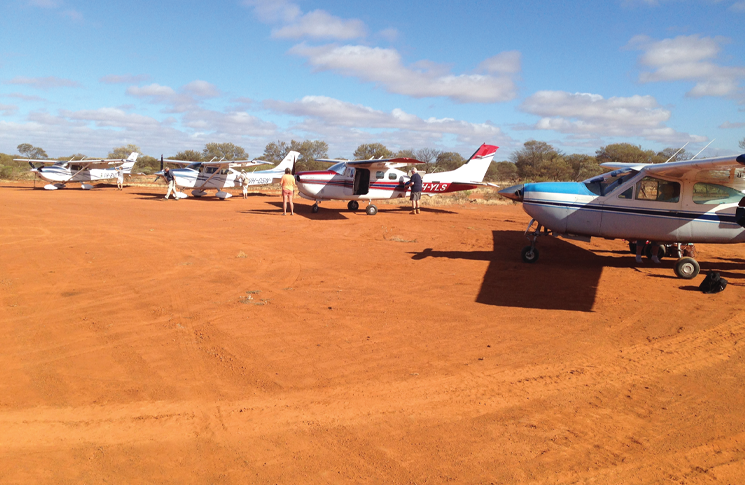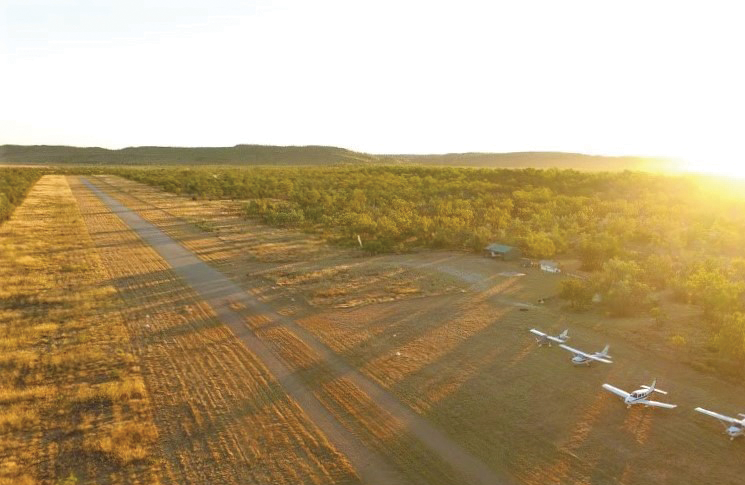What could possibly go wrong when a hobby pilot flies into the Outback after lockdown? Yes, many things! So here’s some great advice from an experienced air safari leader
Kings Creek Station, NT, circa 2008: Divorce proceedings are ramping up in the cockpit of a Melbourne-based Cessna 182 whose proud owner, sitting at the controls pre‑startup, is staring disbelievingly out the windscreen.
The propwash of a nearby taxiing aircraft is express delivering about half an acre of the Territory’s finest red directly at him. He’s screaming obscenities – she’s under the seat with the Valium out. It’s going to be a long day.
Flying safely in the Outback is one thing; retaining your mates is quite another. Lack of airmanship on the ground does not go unnoticed and is a great way to fracture a friendship.
This is the first of 3 scenarios which could definitely do with some illumination. They don’t include the big-ticket safety items like weather, fuel and flight planning. We all read tomes of good advice on those. And so we should! Skimp on the detail on any of those babies and you’re not going to be flying for long.
Frankly, the aim of the game out there is to have fun, absorb the magic of our Outback and keep the blood pressure down in the process – right? Let’s start with a few reminders.
Airmanship on the ground
Scenario: Let’s take up the case of the Valium fiasco. I’m putting ground ops at the top because it is, hands-down, the discipline that is so routinely ignored. Knowing what’s going on around you during start-up and taxiing at bush strips is critical, and is something I learnt the hard way in my early years of flying. Now, as we often fly in a fleet of up to 8 aircraft, all sharing the same dusty parking area, it becomes paramount to get right.
TIPS
- Grab the other pilots before you all hop into your aircraft and decide on a departure plan. Have a good look around you, note where the wind is coming from. There will be a logical order in which to leave, to mitigate layering a tonne of dust on the planes behind you.
- During your daily inspection, look down at your wheels. Have they settled into the moist grass or the soft surface overnight? Push the aircraft forwards, even just a foot, to get it out of the divot. Then you won’t need an excess of power to get her moving. While you’re there, angle the tail away from any other aircraft near you.
- Park economically in tight spaces: ideally, high wing, low wing, high wing. Don’t take up 2 spots and think ‘I’m right, Jack’. You’ll find yourself left right out of the shout at 6 pm.
And while we’re still on the ground, remember the basic tips about caring for your prop:
- Using minimum power, start up and taxi with the stick held back to keep weight off the nose wheel, maximising the clearance between the ground and the prop. For this reason, during the warm-up when your hands are fully tasked, ask your passenger to hold the stick back for you.
- On a soft or stony strip, never do run-ups while stationary. The spinning prop creates a vortex that very effectively sucks up all those stray little stones, straight into your beloved blades. Do your run-ups at reduced RPM while taxiing to the threshold.
Runway disorientation
Scenario: Hang on – which end is 23? What’s the windsock saying? Is that 23 or 05? Where’s north gone? Are they COWS???
We’ve all been there. Runway disorientation approaching a circuit offers you nothing but stress. Totally unnecessary. Why not have it all laid out on your lap before you get there? I’ve got a little routine I go through before arriving at every destination, which deadset works every time. I know, I know – you don’t think you need this, but just hear me out before you move on.
I’ve got a little routine I go through before arriving at every destination, which deadset works every time.
TIPS
- Well before you turn up at your destination airport, digest the AWIS, ATIS or local information for the current weather there.
- Study the runway layout on your airport diagram. If you haven’t got one of these in front of you, you must be really good at praying.
- Now, pick up your pencil and draw a big arrow showing your flight path inbound towards the circuit. Next, draw a double-bladed arrow showing the wind direction. You’re still 10 miles out by this point.
- Determine the into-wind runway. Draw a base and final leg for that runway.
- Rotate the diagram so your inbound flight path arrow is pointing in the direction of travel.
- Now decide which leg of the circuit you’ll be joining on. Does that entail an overfly or not? Check the elevation and write down the overfly height and circuit height. I even write in a target final turn height. Who needs maths when you’ve got an armful of aircraft turning final?
By the time you’ve found the airport, you are completely oriented with what you’re seeing out the front. You’ve planned your circuit join and have the head space to handle any surprises.
Study the runway layout on your airport diagram. If you haven’t got one of these in front of you, you must be really good at praying.
Last light
Scenario: You’re departing Broome this morning and your Mum is expecting you at her place in Tennant Creek for a lamb roast tonight. Unfortunately, you were so busy racing off for the sunset camel ride last night, you forgot to put your pitot cover on. You now have a mud wasp happily wedged in your pitot tube. After every angle of physical coaxing proves useless, a LAME is called. By the time she has sorted you out, it’s 1130 WST. Will you make it before last light at YTNK or will you have to disappoint your Mum?
TIPS
- Look up last light at YTNK today. Take off the obligatory 10 minutes. (I take off half an hour minimum.) Keep all these calcs in UTC or you’ll be completely insane by the end of this paragraph.
- Decide on any en route stops. Comfort stop at Fitzroy Crossing? Refuelling stop at Halls Creek?
- Now work backwards from your last light time. What’s the latest time you can depart YHLC? And YFTZ? Use ultraconservative ground speeds. No, an easterly today is NOT a tailwind.
- Now slice an hour and a half off your available daylight, for when you cross the WA/NT border.
- OK, finally, what’s the latest time for wheels-up at YBRM? Convert that to local WA time. You can swear now.
Maybe that NVFR rating would have been a good idea after all.
Flying west to east across state borders always throws up this challenge. We’re invariably dealing with long flights across vast distances, with few guaranteed beds available at short notice, and even fewer refuelling options. That route – YBRM-YTNK – is actually a Designated Remote Area. Remember what that means? Look up ERSA GEN FIS 17 and CAO 20.11.
Think about cloud at the other end too. End of daylight can look a whole lot darker if clouds or even surrounding high terrain are throwing unwelcome shade over your circuit. And … put your pitot cover on. Securely. Mine blew off one night in the middle of the Pilbara because the elastic was so worn. Now I’ve got a new one and it gets a knot every time.
Seek advice
I’ll leave you with this – if you’re unsure about anything, seek advice. I spend my life asking questions. Have fun and see you out there.






Comments are closed.